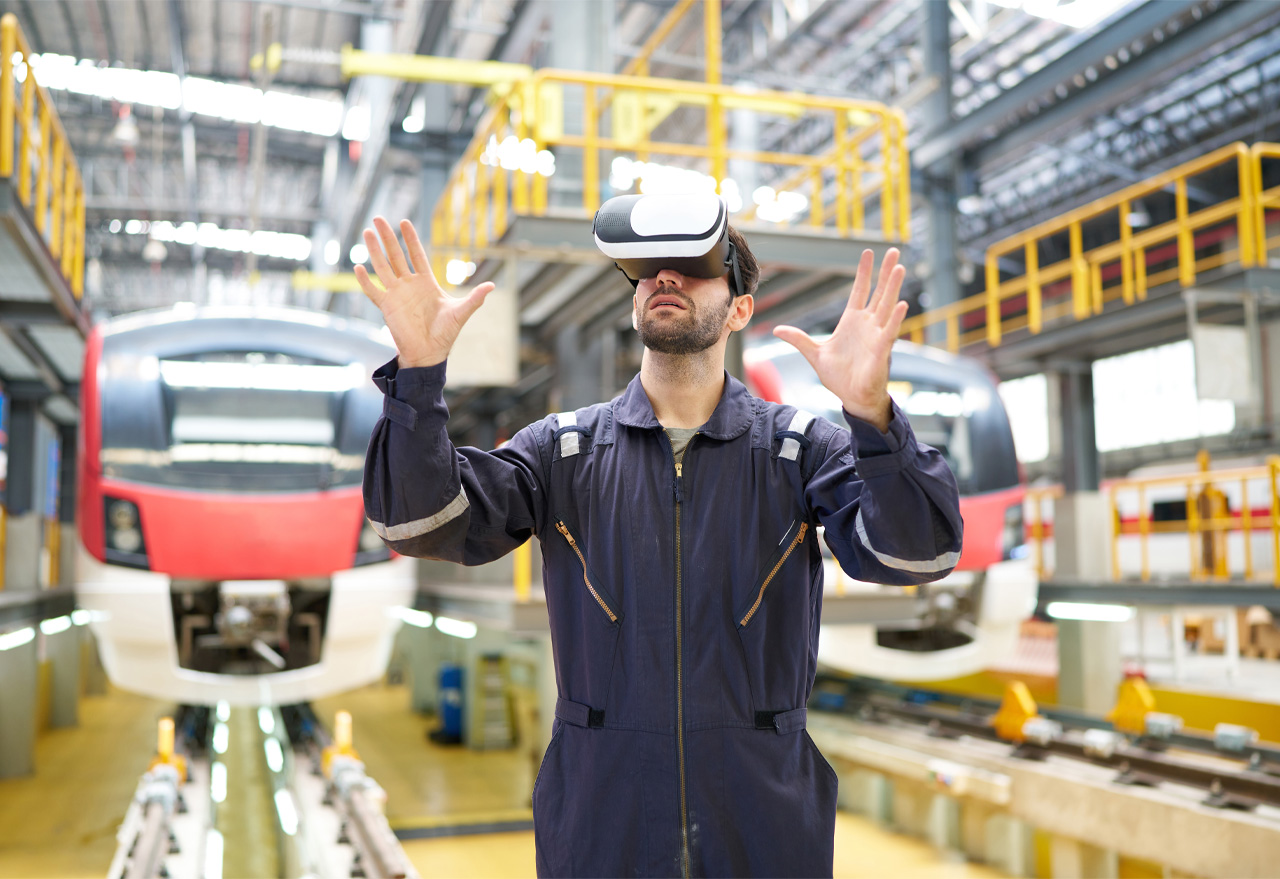In recent years, immersive learning has emerged as a transformative approach to education across multiple industries.
It leverages innovative technologies, such as Augmented Reality and Virtual Reality, to create realistic and engaging learning experiences that build competence at scale. Placing learners in interactive, simulated environments, immersive learning tools enable them to acquire knowledge and develop skills through direct experience.
What is Immersive Learning?
Immersive learning is an experiential learning method that uses Augmented Reality (AR) and Virtual Reality (VR) technologies. It allows learners to engage and interact with digitally created content and environments that accurately represent real-world scenarios. According to a report by PwC, immersive technologies have the potential to boost global GDP by £46.6 million in 2023 when applied to development and training.
Types of Immersive Learning Technologies
Augmented Reality (AR)
Augmented Reality blends the digital and physical worlds using mobile devices or specially designed headsets. Learners can place and interact with computer-generated information in their physical environment, including text, images, or 3D-rendered content.
Virtual Reality (VR)
Virtual Reality is the most widely known immersive technology, and it is used to create simulated 3D environments that can accurately mimic the real world. Learners are fully immersed within the digital environment using a VR headset, exploring and interacting with elements as if they were physically there.
The Benefits of Immersive Learning
Active Engagement
Immersive learning actively engages learners by immersing them in realistic scenarios. This hands-on approach sparks curiosity, promotes critical thinking, and enhances problem-solving skills. Learners are free to explore, experiment, and make decisions, allowing for a deeper understanding of concepts and their real-world applications.
Experiential Learning
In the words of Benjamin Franklin - ‘Tell me, and I forget. Teach me, and I learn. Involve me, and I remember.’ According to a study by Accenture, traditional approaches to learning result in learners forgetting 70% of training content within 24 hours and nearly 90% in a month. Immersive learning embraces the power of experiential learning, as the learner acquires knowledge through doing rather than just passively absorbing information. Using advanced simulations, learners can practically experience real-world scenarios in a safe and controlled environment. This is particularly valuable in high-consequence sectors such as medicine, aviation, and automotive electrification.
Multi-Sensory Experiences
Traditional approaches to learning can sometimes struggle to trigger multiple senses simultaneously. Immersive learning tools incorporate visual, auditory, and tactile stimuli to create a rich, multi-sensory experience. This enhances a learner's ability to process and retain the information presented, making the learning experience more effective and enjoyable.
Real-World Applications
One of the major advantages of immersive learning is its ability to bridge the gap between theoretical knowledge and its application in the real world. Augmented Reality and Virtual Reality learning tools mean learners can practically apply their new skills in simulated environments that closely resemble a professional context. For example, an engineer can be transported to a production line where they need to solve a specific problem. This practical, hands-on experience builds competence and ensures learners are well-prepared for the realities of the work environment.
Motivation and Reward
The dynamic and interactive nature of immersive learning experiences captivates learners, overcoming the challenges of disengagement and boredom. Incorporating gamification elements further enhances motivation by incentivising learners with challenges, rewards, and progression.
Accessibility and Flexibility
Immersive learning tools can be accessed anywhere, anytime. Learners engage with content at their own pace and convenience using virtual reality headsets, web-based platforms, or mobile devices. Making learning content more accessible allows learners from diverse backgrounds and geographical locations to participate in high-quality training.
Measuring Performance
Integrating analytics generates rich data to assess individual performance. Measuring a learner's performance in a particular scenario is crucial to the training process and meeting compliance obligations. The data gathered can be used to edit and update the learning materials to suit individual learning needs and identify areas for development.
Unlocking The True Potential Of Education
Immersive learning represents a paradigm shift in education, transforming traditional learning methods into dynamic and interactive experiences. By actively engaging learners, providing experiential learning opportunities, and improving access, immersive learning unlocks the true potential of education. As technology evolves, immersive learning can revolutionise education, preparing learners for the complex challenges of the modern world and equipping them with the skills they need to succeed.





